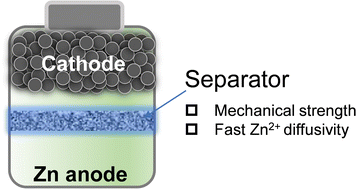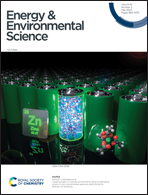Sustainable high-energy aqueous zinc–manganese dioxide batteries enabled by stress-governed metal electrodeposition and fast zinc diffusivity†
Abstract
The re-evaluation of zinc (Zn)-based energy storage systems satisfies emerging demands in terms of safety and cost-effectiveness. However, the dendritic Zn morphology and resulting short circuits within the cell remain long-standing challenges. Moreover, diverse Zn dendrite propagation exacerbates the situation, particularly during high-capacity battery operation. The high-capacity Zn deposition/dissolution process involves numerous sites and interfaces, which leads to disordered Zn dendrite growth because of the inherent diffusion-limited aggregation mechanism. Here, we demonstrate a robust polymer separator that serves as both a physical barrier to stress-governed metal electrodeposition and an ionic charge carrier for fast Zn2+ diffusivity. These insights enable an ultra-high Zn reversibility (99.97%) for 2000 cycles at 20.0 mA cm−2 and 4.0 mA h cm−2, and a high-energy-density (115 W h kg−1 based on pouch cell) Zn–MnO2 full battery with an aggressive N/P capacity ratio (1.35). The abundant and environmentally friendly cell components make it a sustainable battery technology for global electrification.



 Please wait while we load your content...
Please wait while we load your content...